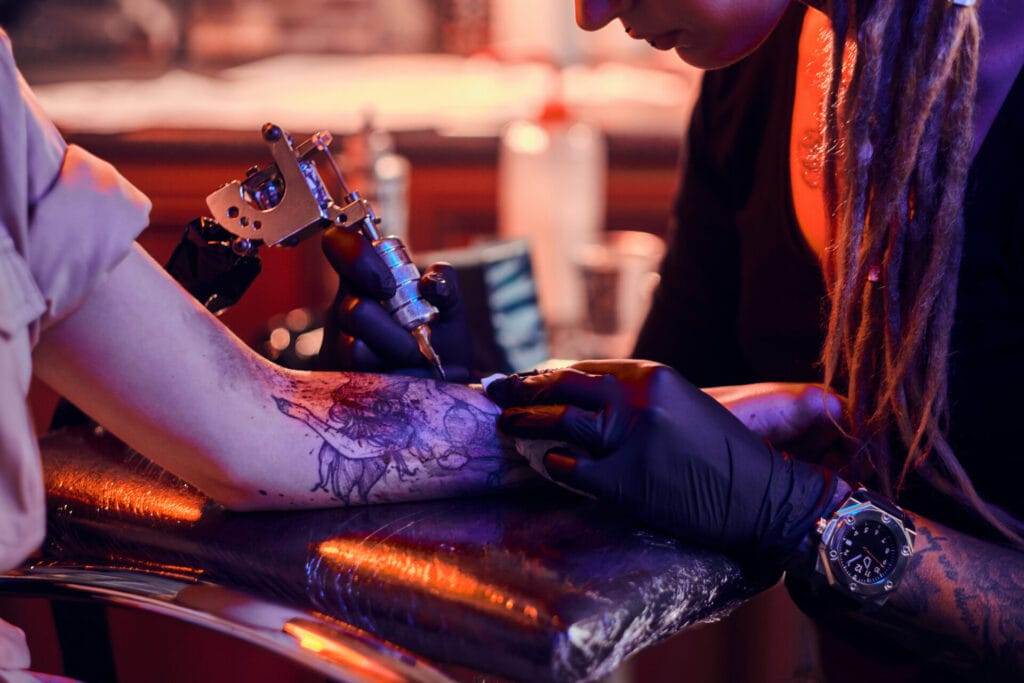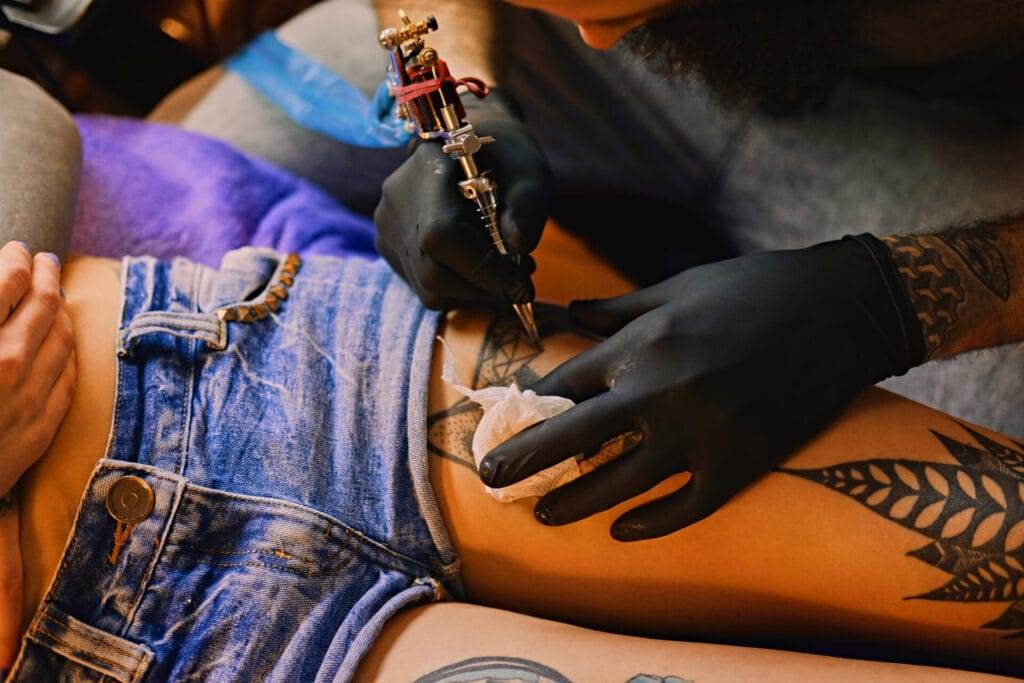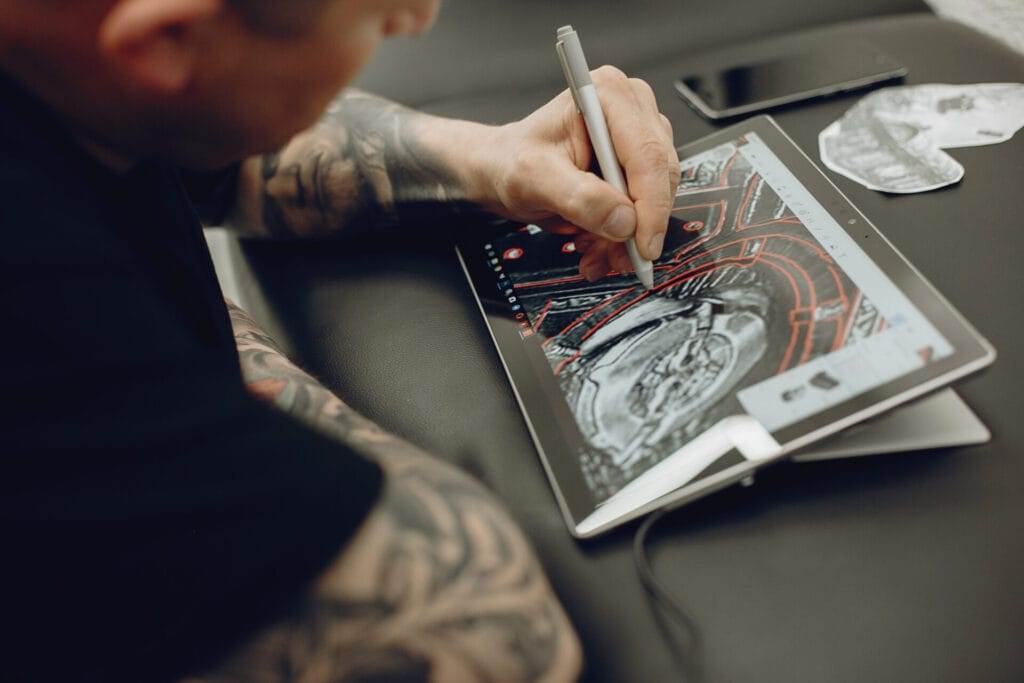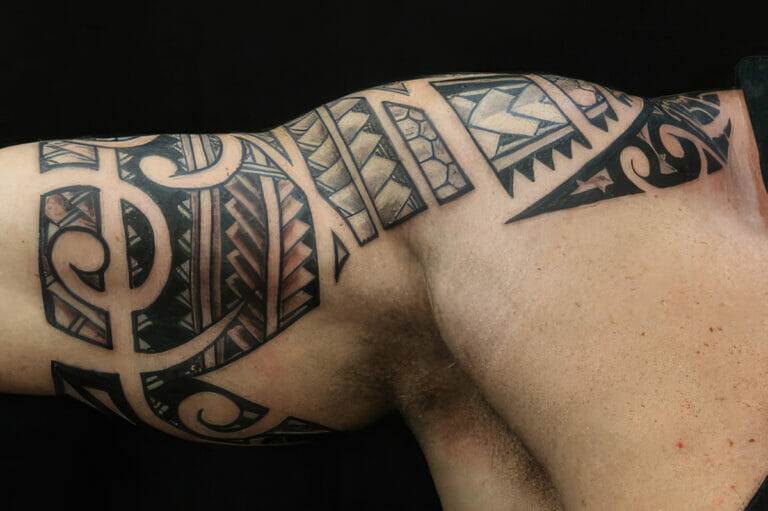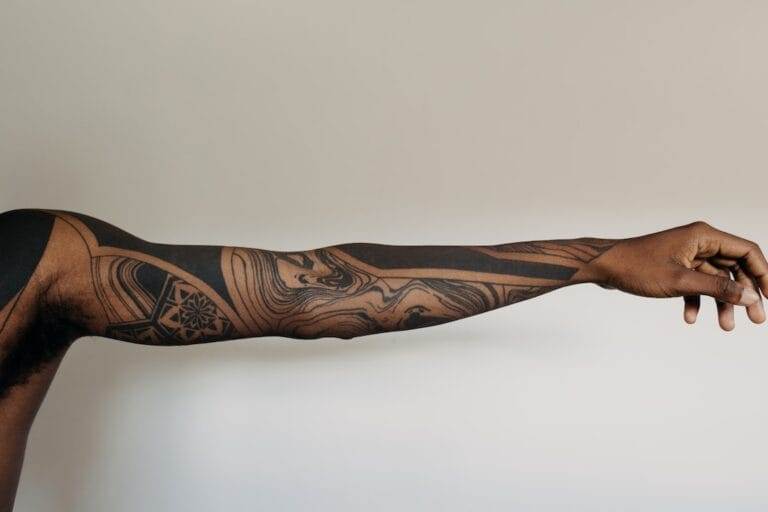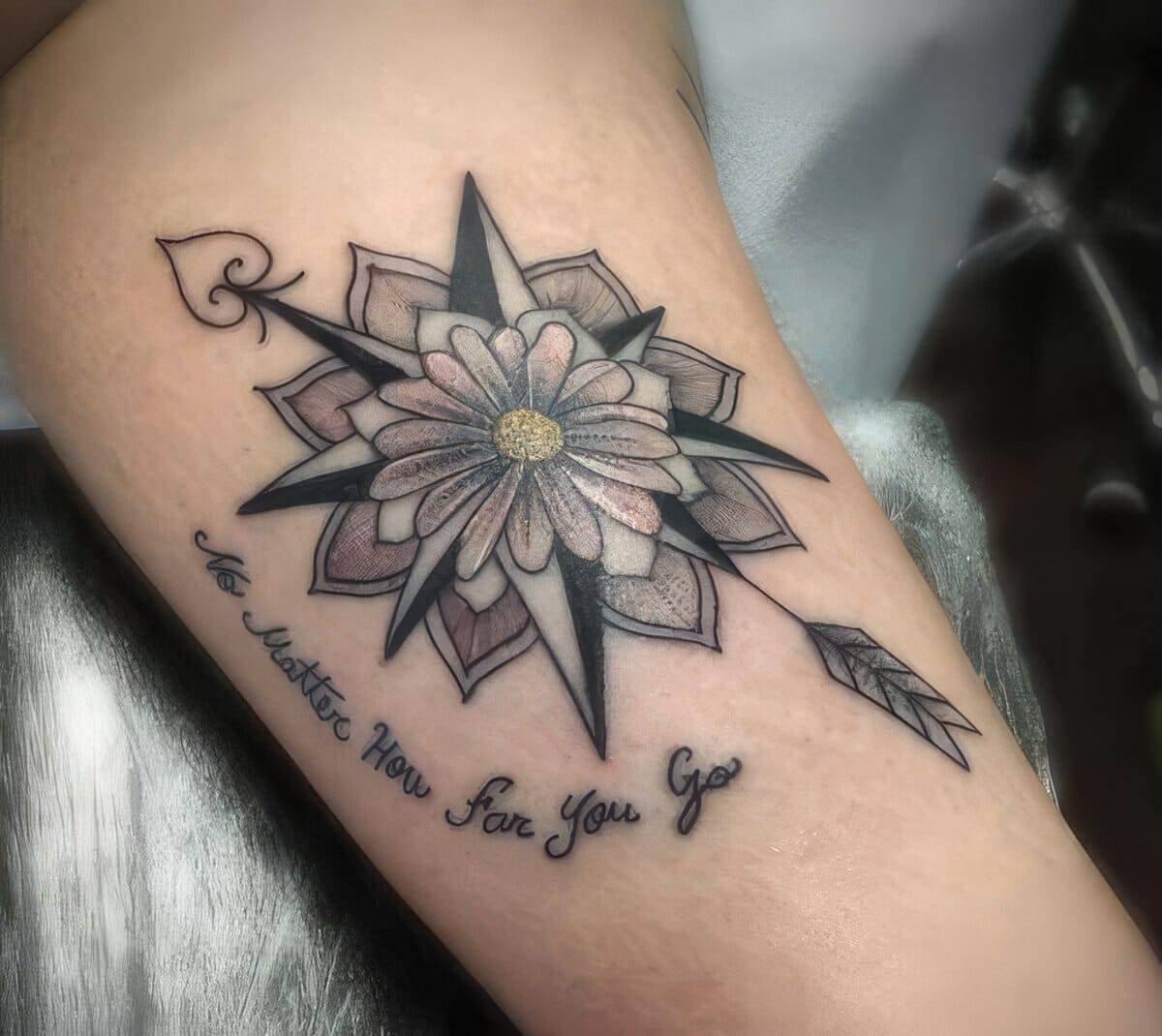
Illustrative tattoos have become increasingly popular in recent years, with more and more people opting for this style of body art. These tattoos are characterized by their intricate and detailed designs, often featuring elements of realism and fantasy. From delicate floral patterns to bold and vibrant portraits, illustrative tattoos offer a wide range of possibilities for self-expression. In this article, we will explore the rise of illustrative tattoos, their artistic process, the elements that make up these tattoos, the importance of choosing the right artist, the meaning behind them, their versatility, the role of color, aftercare tips, future trends, their intersection with fashion, and their impact on society.
The Rise of Illustrative Tattoos: A Brief History
Tattoos have been a form of self-expression for centuries, but the rise of illustrative tattoos as a popular style is a relatively recent phenomenon. In the past, tattoos were often simple and symbolic, with designs such as anchors or hearts being common choices. However, as tattooing has become more mainstream and accepted in society, people have started to seek out more intricate and artistic designs.
The popularity of illustrative tattoos can be attributed to several factors. Firstly, advancements in tattooing technology have made it easier for artists to create detailed and realistic designs. With the advent of modern tattoo machines and high-quality pigments, artists are able to achieve a level of precision that was previously unimaginable.
Additionally, the rise of social media has played a significant role in popularizing illustrative tattoos. Platforms like Instagram have allowed tattoo artists to showcase their work to a global audience, leading to increased exposure and recognition. As a result, more people are seeking out these talented artists to create unique and personalized illustrative tattoos.
The Artistic Process: From Sketch to Ink
Creating an illustrative tattoo is a multi-step process that requires both artistic skill and technical expertise. It begins with a consultation between the client and the artist, where the client discusses their ideas and preferences for the tattoo. The artist then creates a preliminary sketch based on these discussions, taking into account factors such as placement, size, and style.
Once the sketch is finalized, the artist transfers it onto the client’s skin using a stencil. This allows them to see how the design will look on the body and make any necessary adjustments. Once the client is satisfied with the placement and size of the tattoo, the artist begins the inking process.
Using a tattoo machine, the artist carefully applies ink to the skin, following the lines of the design. They may use different needle configurations to achieve different effects, such as shading or fine details. Throughout the process, the artist must ensure that they are maintaining proper hygiene and sterilization practices to prevent infection.
The Anatomy of an Illustrative Tattoo: Understanding the Elements
Illustrative tattoos are characterized by their attention to detail and intricate designs. There are several key elements that make up these tattoos, including line work, shading, and color.
Line work is an essential component of illustrative tattoos, as it defines the shape and form of the design. Artists use different types of lines, such as bold outlines or delicate hatching, to create depth and dimension in their work. The thickness and consistency of these lines can vary depending on the desired effect.
Shading is another important element in illustrative tattoos. It adds depth and realism to the design by creating areas of light and shadow. Artists use different techniques, such as stippling or cross-hatching, to achieve different shading effects. This can range from subtle gradients to bold contrasts, depending on the style of the tattoo.
Color is often used in illustrative tattoos to enhance the overall aesthetic and bring the design to life. Artists carefully select pigments that complement each other and work together harmoniously. They may use a combination of vibrant colors or opt for a more muted and monochromatic palette, depending on the desired effect.
The Meaning Behind Illustrative Tattoos: Symbolism and Personalization
Illustrative tattoos offer a unique opportunity for individuals to express their personal beliefs, values, and experiences. Many people choose to incorporate symbols or imagery that hold special meaning to them, creating a deeply personal and meaningful tattoo.
Symbols such as flowers, animals, or religious icons are often used in illustrative tattoos to represent specific ideas or concepts. For example, a lotus flower may symbolize purity and enlightenment, while a wolf may represent loyalty and strength. These symbols can be combined with other elements to create a more complex and layered design.
In addition to symbolism, illustrative tattoos can also be highly personalized. Clients often work closely with their chosen artist to create a design that reflects their unique personality and experiences. This can involve incorporating elements such as names, dates, or quotes that hold personal significance.
The Versatility of Illustrative Tattoos: From Minimalist to Realistic
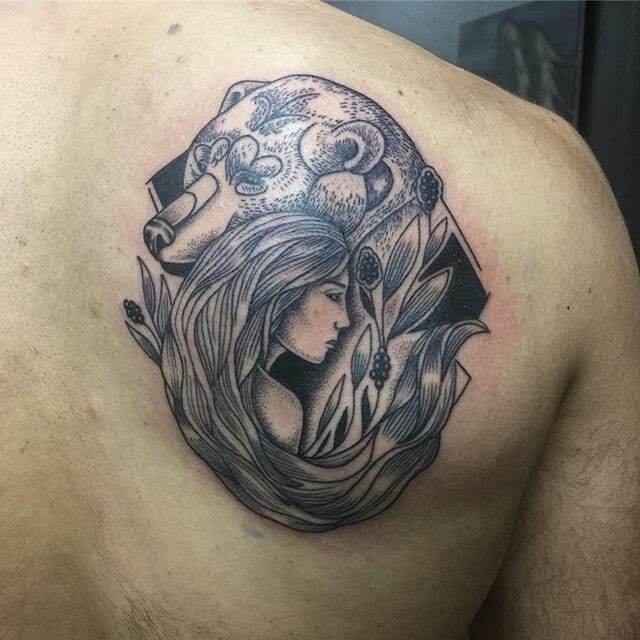
One of the great things about illustrative tattoos is their versatility. They can range from minimalist and delicate designs to bold and realistic depictions. This allows individuals to choose a style that best suits their preferences and aesthetic.
Minimalist illustrative tattoos often feature clean lines and simple shapes. They are characterized by their simplicity and understated elegance. These tattoos are often small in size and can be placed discreetly on the body, making them a popular choice for those who prefer a more subtle look.
On the other end of the spectrum, realistic illustrative tattoos aim to capture the fine details and nuances of the subject matter. These tattoos often feature intricate shading and vibrant colors, creating a lifelike representation of the design. Realistic illustrative tattoos require a high level of skill and expertise on the part of the artist, as they must be able to accurately capture the texture and form of the subject.
The Role of Color in Illustrative Tattoos: Adding Depth and Dimension
Color plays a crucial role in illustrative tattoos, as it can add depth, dimension, and visual interest to the design. Artists carefully select pigments that complement each other and work together harmoniously to create a cohesive and visually appealing tattoo.
Color can be used in various ways in illustrative tattoos. It can be used to enhance the overall aesthetic of the design, making it more visually striking and captivating. For example, vibrant colors can be used to create a bold and eye-catching tattoo, while more muted tones can create a softer and more subtle effect.
Color can also be used to create depth and dimension in illustrative tattoos. Artists use different shading techniques to create areas of light and shadow, which can give the design a three-dimensional quality. This can make the tattoo appear more realistic and lifelike, adding to its overall impact.
The Aftercare of Illustrative Tattoos: Tips for Keeping Your Ink Vibrant
Proper aftercare is essential for keeping your illustrative tattoo looking vibrant and fresh. Taking care of your tattoo in the days and weeks following the inking process can help prevent infection, promote healing, and ensure that the colors remain vibrant.
One of the most important things to remember is to keep the tattoo clean and moisturized. Wash the tattoo gently with mild soap and water, being careful not to scrub or rub the area. Pat it dry with a clean towel and apply a thin layer of fragrance-free moisturizer or tattoo aftercare cream.
It’s also important to avoid exposing your tattoo to direct sunlight or tanning beds, as this can cause the colors to fade. If you need to be in the sun, make sure to apply a high SPF sunscreen to protect your tattoo. Additionally, avoid swimming in pools or hot tubs until your tattoo has fully healed, as these environments can harbor bacteria that can lead to infection.
The Future of Illustrative Tattoos: Innovations and Trends
The world of illustrative tattoos is constantly evolving, with new trends and innovations emerging all the time. As technology continues to advance, artists are finding new ways to push the boundaries of what is possible in tattooing.
One emerging trend in illustrative tattoos is the use of mixed media. Artists are incorporating elements such as watercolor, collage, or even digital art into their designs, creating a unique and visually striking result. This allows for even more creativity and experimentation in the world of illustrative tattoos.
Another trend that is gaining popularity is the use of UV-reactive ink. These inks are invisible under normal light but glow under ultraviolet light, creating a stunning and unexpected effect. UV-reactive tattoos are often used to create hidden designs or messages that can only be seen under certain conditions.
The Intersection of Illustrative Tattoos and Fashion: From Runways to Streetwear
Illustrative tattoos have become increasingly intertwined with the world of fashion, with many designers and brands incorporating them into their collections. Tattoos have long been associated with counterculture and rebellion, but they are now being embraced by the mainstream fashion industry.
Runway shows have featured models with elaborate illustrative tattoos, showcasing the beauty and artistry of this style. Designers such as Alexander McQueen, Jean Paul Gaultier, and Marc Jacobs have all incorporated tattoos into their collections, blurring the lines between fashion and body art.
In addition to high fashion, illustrative tattoos have also made their way into streetwear and casual fashion. Many clothing brands now offer tattoo-inspired designs on t-shirts, hoodies, and accessories. This allows individuals to embrace the aesthetic of illustrative tattoos without committing to permanent ink.

The Impact of Illustrative Tattoos on Society: Breaking Stereotypes and Embracing Individuality
Illustrative tattoos have had a significant impact on society, helping to break down stereotypes and promote individuality. In the past, tattoos were often associated with criminality or deviance, but this perception has shifted in recent years.
The rise of illustrative tattoos has helped to challenge these stereotypes by showcasing the artistic and creative potential of body art. People from all walks of life are now getting tattoos as a form of self-expression, regardless of their profession or social status.
Illustrative tattoos have also played a role in promoting body positivity and self-acceptance. By embracing their bodies as a canvas for art, individuals are able to celebrate their uniqueness and challenge societal beauty standards. Tattoos can be a powerful tool for reclaiming ownership over one’s body and expressing oneself authentically.
Illustrative tattoos have become a popular form of self-expression in contemporary culture. They offer individuals a unique and creative way to showcase their personality, beliefs, and experiences. From the artistic process to the elements that make up these tattoos, there is a lot to consider when getting an illustrative tattoo. Choosing the right artist, understanding the meaning behind the design, and properly caring for the tattoo are all important factors to consider. As illustrative tattoos continue to evolve and gain popularity, they will undoubtedly have a lasting impact on society and the world of fashion.

